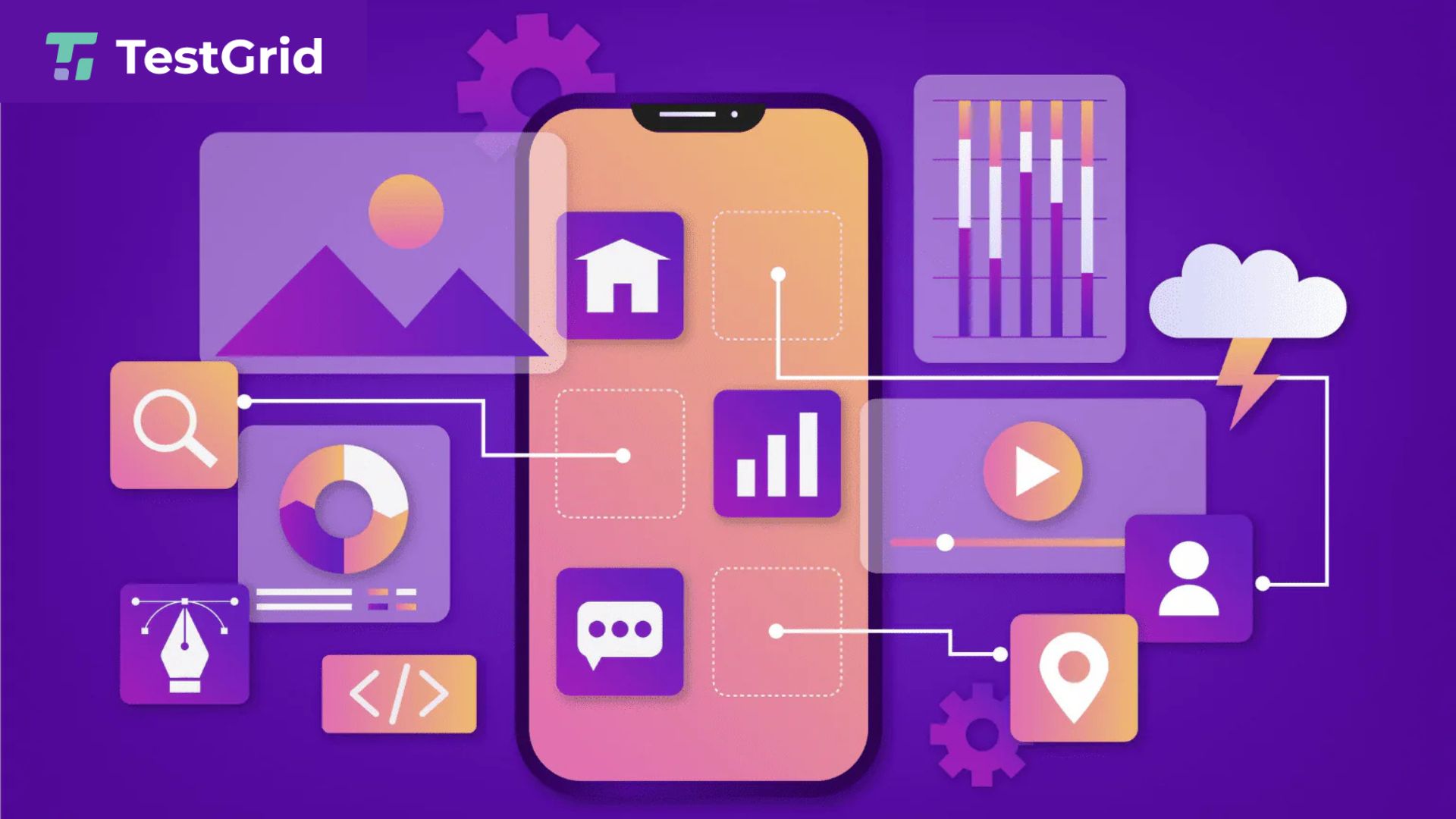How To Select Mobile App Testing Platforms
 Steve Wortham
Steve Wortham
This illustrates how there seems to be an app for almost everything in our life these days. Consumers are becoming more picky about the caliber of the digital experiences they receive. When it comes to shopping, making doctor’s appointments, or enrolling in fitness courses, users anticipate smooth, well-thought-out, and extensively tested applications.
Customers can easily switch from apps that don’t live up to their expectations because to the abundance of options, whether it’s due to subpar features or an unfriendly user interface. The ability to uninstall and look for alternatives in this cutthroat market serves as a constant reminder to people how spoiled for choice they are.
Thorough mobile app testing is necessary to make sure an app fulfills and beyond user expectations. To find and fix such problems, testing in various settings that simulate real-world usage scenarios is essential. The choice of the best mobile app testing tool becomes crucial to completing this process successfully.
What is Mobile App Testing?
Testing mobile applications entails assessing programs made for contemporary mobile devices to guarantee their performance, usability, and functionality. The growing ubiquity of mobile internet usage underscores the need of mobile testing. It is imperative to provide a pleasant mobile app experience since consumers are spending more time on their phones. Automated or manual mobile testing ensures that the application satisfies user expectations and business objectives.
Mobile App Types
Explore the following three primary categories of mobile applications that require testing:
Native Apps: Created especially for a single mobile operating system (often iOS or Android), these applications are usually downloaded and set up via app stores such as Google Play Store or Apple App Store.
Responsive Web Apps: These programs are intended to be used with mobile browsers, can be either a progressive web app (PWA) with extra mobile-friendly features or a mobile-friendly version of a website.
Hybrid Apps: It serves as a middle ground between installable hybrid apps via app stores, native apps, and online apps. While they may include some native functionality, they partially rely on operating as web apps encapsulated in a native shell.
Factors to Consider While Selecting A Mobile Testing Platform
Considering these distinctions is vital to developing a comprehensive mobile testing strategy and ensuring the optimal performance of diverse mobile applications. Therefore, one must keep the following factors in mind before selecting the ideal platform for your mobile testing needs:
1. Testing on Real Mobile Devices
Regardless of the app type, real mobile device testing is essential to observe how the app performs in actual user conditions, as emulators and simulators lack the full replication of real-world scenarios. While creating an in-house mobile device lab with multiple devices and operating systems is an option, it involves ongoing efforts and significant time and financial investment. Therefore, it is important to select a platform that offers real-device testing.
2. Integration with Testing Frameworks & Tools
Valuable mobile testing tools aim to simplify the lives of developers and testers. When opting for cloud-based tools, prioritize those with seamless integrations with commonly used tools and frameworks, eliminating the need for additional downloads.
3. Ensuring Data Security
Top-notch mobile testing tools prioritize customer data security, which is crucial in the collaborative environment of app development. The distribution of builds during testing increases vulnerability, making it essential to thoroughly test the tools for solid data security measures and regular system upgrades against potential threats.
4. Test Reporting, Error Capture & Debugging
Effective app testing tools should capture test failures and generate detailed reports pinpointing the exact moment of failure. These reports should include comprehensive information about the environment and test conditions at the time of failure, aiding developers in resolving errors.
The chosen Android or iOS app testing tool should generate detailed reports, including screenshots of specific test steps, and be capable of exporting reports in various formats for viewing on different devices and operating systems.
5. Support for Diverse Testing Techniques
The selected testing tool should receive regular updates to accommodate evolving testing techniques. From scriptless testing to performance testing, it should give end-to-end solutions under one roof. Look for tools that can adapt to future releases and trends with the latest updates.
6. Device Diversity and Platform Compatibility
Once the app is launched, it needs to function across various devices with different screen sizes, resolutions, OS versions, and carrier settings. Testers and developers should ensure that the testing tools are compatible with multiple platforms. An efficient tool that supports a wide range of platforms aids in cost optimization and convenience, making it essential to verify its compatibility and cross-browser testing capabilities.
7. Testing Across Varied Network Settings
With diverse devices using different internet connectivity frequencies, bandwidths, and mediums, it’s crucial to assess app performance under various network conditions.
8. User-friendly interface
Testing tools often become complex, especially in advanced stages. To overcome this challenge, it’s advisable to choose a tool with a user-friendly interface that developers, test automation engineers, and non-programmers can easily handle and maintain.
9. Consideration for Project Team and Processes
The skills and capabilities of developers and testers, their familiarity with testing and communication tools, and their ability to collaborate with internal teams affect tool selection. Understanding the mobile app development company, their processes, and tech stack is crucial in choosing the right testing tools.
10. Cost Analysis
Pricing and budget factors play a significant role in selecting an automation tool. A comprehensive budget should be devised for testing operations, considering the prices of different tools in the market. The cost should be justified by assessing ROI, including additional add-ons, support, and update expenses. Businesses should identify tools that offer higher ROI for effective investment.
Conclusion
Selecting a mobile app testing platform is a critical decision that can highly impact the success of your application in a competitive market. Testgrid emerges as the ideal solution that fulfills all the parameters essential for comprehensive testing, whether manual or automated.
Source: This article was originally published at https://dianapps.com/blog/how-to-select-mobile-app-testing-platforms/.
Subscribe to my newsletter
Read articles from Steve Wortham directly inside your inbox. Subscribe to the newsletter, and don't miss out.
Written by

Steve Wortham
Steve Wortham
Experienced Software QA Manager passionate about delivering top-quality software, writing intuitive content, and fostering connections with industry peers.